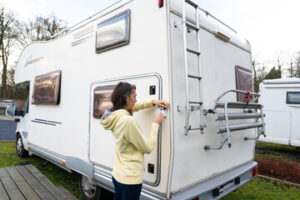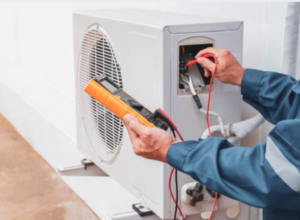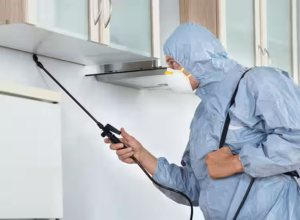Pest control aims to prevent or reduce damage caused by pests. This can be achieved through prevention, suppression, or eradication.
Prevention methods include removing food, water, shelter, and entry points, which help pests to thrive, and using traps or bait stations. Physical barriers such as caulking cracks and sealing spaces around pipes can also be used. Contact Pest Control Kansas City now!

Accurate pest identification is the first step in developing an effective pest control strategy. Whether a weed, insect, animal or microbe, correct identification allows for targeted control tactics that minimize risk to people and the environment.
Invasive plants and animals can disrupt natural ecosystems by competing with native species for resources, dispersing disease organisms or damaging crops, property and buildings. Correct pest identification helps to determine if the invasive plant or animal is harmful, a nuisance, or simply part of the local ecology.
A pest can be any organism that causes direct or indirect damage to humans, livestock, wildlife, crops, property or the environment. Generally, a pest must have some serious or significant negative effect in order to be considered a problem and need to be controlled. Pests can affect the appearance of gardens or buildings, cause illness in people, contaminate food and water supplies or threaten human or animal health.
Pests may have a frightening or ugly appearance, like spiders, silverfish and earwigs, bite or sting (real or perceived), and/or carry and spread diseases, such as bed bugs, fleas, ants, cluster flies and cockroaches. They can also stain or mark surfaces, such as the stains left by pine seed bugs and boxelder bugs, and damage personal items, such as textiles and artworks.
Many pests look different at various stages of their life cycle and can be mistaken for non-pests or even beneficial organisms. This is why it’s best to have a professional help with the identification process. Contact your county extension office or a pest management professional for identification assistance.
A professional can help identify the pest and determine the most effective control tactic. For example, a pest management professional may recommend a preventative approach rather than extermination to reduce the probability of an infestation in the future. Preventive measures can include physical barriers, using repellents, or installing sanitation systems to prevent pests from entering the building or yard.
Another option is to employ predatory pests as part of an integrated pest management strategy. For example, green lacewings and ladybugs eat aphids, while ground beetles eat slugs and caterpillars. Similarly, parasitic nematodes (like Steinernema thuringiensis) kill or inhibit the growth of cockroaches and other pests without killing or harming their hosts.
Pesticides
The term pesticide describes a broad group of chemicals used to kill or control a specific species of organism (a pest) or to prevent an infestation. The most commonly known pesticides include insecticides (bug killers), herbicides (weed killers), fungicides (mildew and fungus killers) and rodenticides (rodent killers). Other less common, but still important types of pesticides are ovicides, which control the hatching of eggs, and pheromones which attract or deter insects and other organisms.
The primary purpose of a pesticide is to protect crops from harmful organisms, which can reduce yields or even destroy the crop altogether. Other important purposes are to control disease vectors, protect human or livestock health, and prevent the damage of property or buildings.
Because they are essentially poisonous, all pesticides carry some risk to humans and animals. The risk varies between pesticides and is largely determined by their chemical makeup and how they are used. Proper use decreases the risk to a level deemed acceptable by pesticide regulatory agencies.
Insecticides are the most acutely toxic because they kill insects by attacking their nervous systems. Herbicides present chronic risks because they are absorbed through the soil, water or air. Fungicides can cause a range of health problems, from respiratory issues to diseases and disorders such as Parkinson’s and cancer. Rodenticides pose short-term and long-term risks because they can cause both physical and psychological harm.
Whenever using pesticides, it is important to read and follow the label instructions. Always use a pesticide that is specifically designed for the specific pest you are trying to control. Ensure the product is Schedule 7 or lower for household pesticide products, as these are generally considered to be less toxic and pose a lower risk to people, pets and the environment.
In addition to the health risks, all pesticides introduce pollution into the environment. They enter the air, water, and sediments and eventually end up in our food. They can also harm biodiversity in streams, diminish pollination, reduce the number of invertebrates in lakes, and degrade ecosystems. Moreover, pests can develop resistance to a particular pesticide, necessitating a change in the type of pesticide or a larger dose.
Prevention
The goal of preventative pest control is to keep pest populations below harmful levels without the need for intervention. This strategy prioritizes sanitation, sealing entry points, and modifying the environment to make the location less attractive to pests.
Sanitation reduces the food, water, and shelter available to pests. This can be accomplished by regularly disposing of trash, properly storing outdoor materials, and keeping the surrounding area clean.
Sealing cracks and openings that pests can exploit can significantly cut down on their numbers. This includes caulking around doors, windows, and trims and re-caulking periodically. It’s also a good idea to fit your home with screens, especially for vents and windows. Keeping the screens in good shape can be an effective deterrent to flying insects and small rodents.
Regular yard maintenance is another important aspect of prevention. Properly trimming bushes and mowing the lawn can make it harder for pests to access food sources, water, and shelter.
Physical barriers to pests can be as simple as mountains and bodies of water that restrict their movement or features that provide roosting and hiding spots. The availability of food, water, and shelter affects all pest populations and can cause them to rise or fall.
Many pests have natural enemies that reduce their numbers and can be augmented by the release of these predators or pathogens. These methods are known as biological controls. They may include the introduction of sterile males or the use of pheromones to alter a pest’s behavior.
There are a number of other devices and machines that can be used to control pests or alter their environment. These are called mechanical or physical controls. They can include traps, barriers, netting, radiation, electricity, and other methods that are used to disrupt the pest’s habitat or otherwise limit their ability to reproduce. These can be used in combination with other pest management strategies to help suppress pests below unacceptable levels. Suppression and prevention are often the same goals for pest control. The right combination of techniques can quickly bring pests to a manageable level where treatment is not necessary.
Treatment
Treatment is what happens when you are dealing with an infestation of a pest. This type of pest control is reactive and is done after a thorough inspection and identification of the pest species and extent of the problem. Treatments should be used in conjunction with preventative measures.
Pests can be controlled by removing or restricting their access to food, water, shelter, and other necessary components of life. This may include blocking entrance points, sealing cracks, cleaning up debris, fixing leaks, and practicing good sanitation. Chemicals can also be used to reduce pest populations. These can include herbicides, insecticides, and rodenticides. It is important to start with the least toxic options and only resort to chemicals when they are needed. These methods should be used sparingly and in accordance with the pest control program’s Integrated Pest Management principles.
There are several ways to treat a pest infestation, including baits, traps, surface sprays and fumigation. It is very important to always follow the label instructions and safety protocols when using any chemical product, especially those that are flammable, corrosive or toxic to humans. Inhalation, ingestion, or skin absorption of pesticides can all pose health risks if not followed correctly.
If prevention is not working, treatments are what are needed to break the pest cycle and get numbers under control. This should be done in a way that minimizes harm to everything except the pest. Control is often done in stages: prevention, suppression, and eradication. Prevention is the most desirable method, but this can be difficult to accomplish in residential settings. Suppression and eradication are less desirable but sometimes necessary, particularly in hospitals, where there is a zero tolerance for the presence of bacteria and other contaminants in operating rooms or other sterile areas.
As temperatures fall, ants, earwigs, spiders and mice will seek warmth in homes and other structures. A preventative pest control plan that includes regular treatments during the summer can help keep these unwanted insects and other pests away from your home or business. Please contact us if you would like more information on our preventative pest control plans or have questions about our services.








